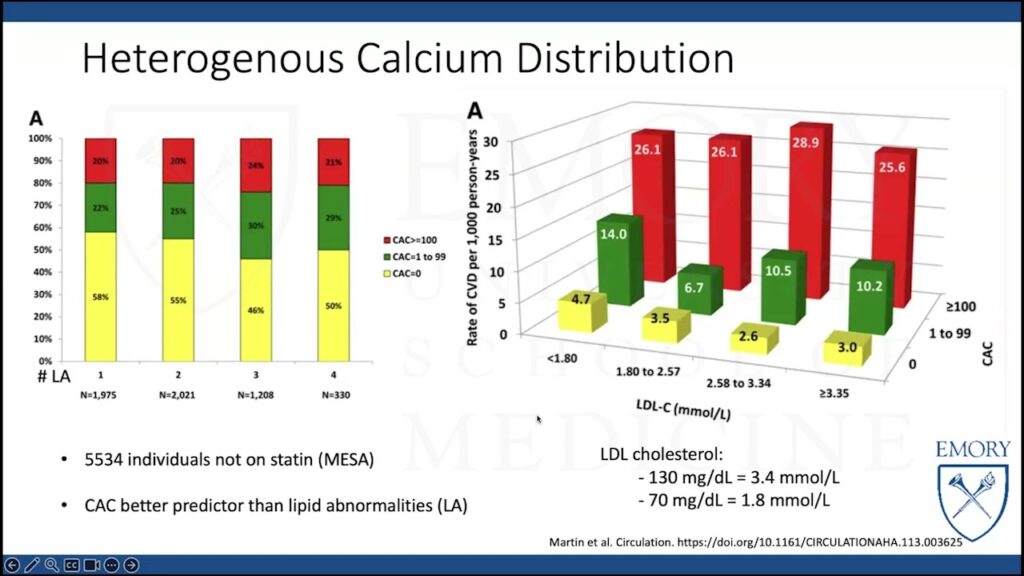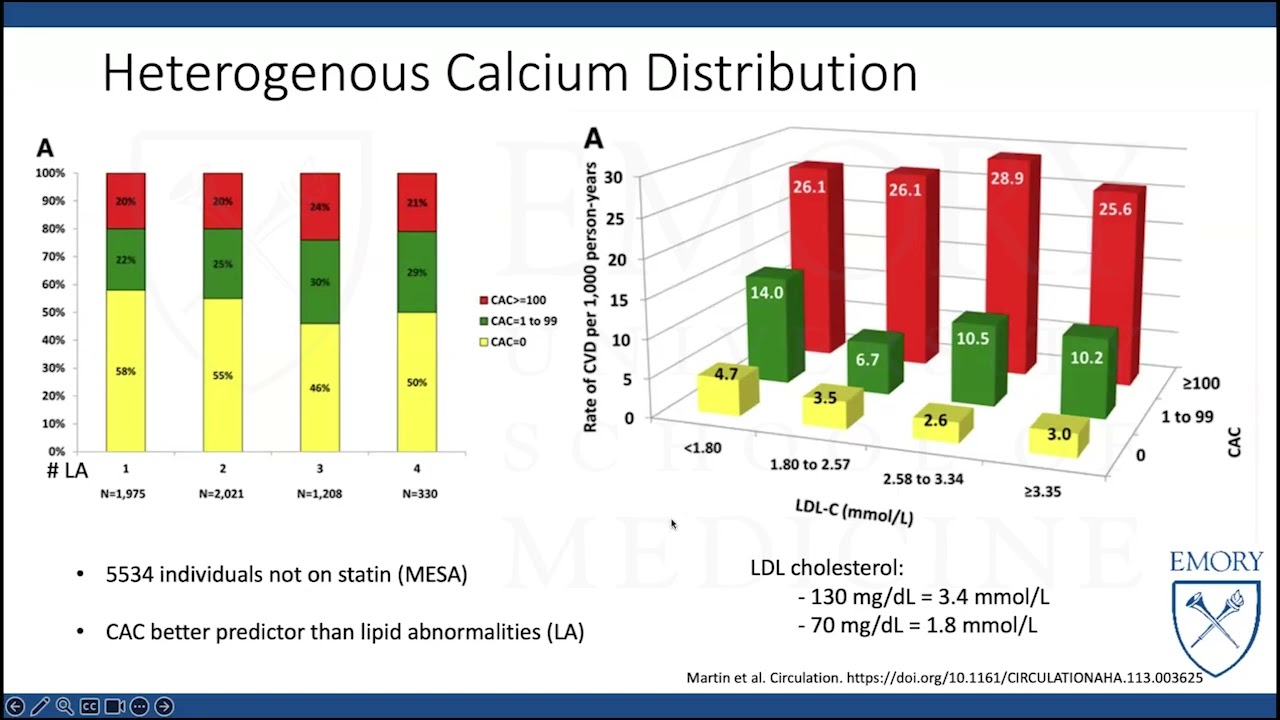Good day to you! Today, we are going to explore the world of cardiac CT scans and the latest updates and controversies surrounding them. Cardiac CT plays a crucial role in evaluating coronary artery disease and provides valuable information, even with high calcium scores. Studies suggest that coronary CT can predict vulnerable plaque and reduce the need for invasive procedures. Updates in technology, like automated plaque analysis, may enhance risk assessment, leading to more personalized treatment plans.
Meet Dr. Patrick Gleason and Dr. Michael McDaniel from Emory University, who will guide us through this discussion. Dr. Gleason, an expert in cardiac imaging, will focus on asymptomatic patients and risk reclassification. On the other hand, Dr. McDaniel, an interventional cardiologist, will share insights on the approach to symptomatic patients, both in outpatient and inpatient settings. Together, they will also touch on future technologies and pathways involving cardiac CT. Get ready to delve into the world of cardiac CT updates and controversies!
Overview of Cardiac CT
Cardiac CT is a crucial tool used to assess coronary artery disease, providing valuable information even with high calcium scores. Studies have suggested its predictive value in identifying vulnerable plaque, aiding in early intervention and treatment.
Importance in assessing coronary artery disease
Cardiac CT plays a significant role in assessing coronary artery disease by providing detailed images of the heart and blood vessels, allowing healthcare professionals to evaluate the extent of plaque buildup and possible blockages. This information is vital in determining the appropriate treatment plan and monitoring the progression of coronary artery disease over time.
Valuable information with high calcium scores
Even in cases of high calcium scores, cardiac CT can provide valuable insights into the presence of atherosclerosis and potential risks associated with coronary artery disease. By accurately quantifying calcium deposits, healthcare professionals can better assess the severity of the disease and make informed decisions regarding patient care.
Predictive value in identifying vulnerable plaque
Cardiac CT’s predictive value in identifying vulnerable plaque is essential for preventing acute cardiovascular events such as heart attacks and strokes. By detecting vulnerable plaque early on, healthcare professionals can take proactive measures to reduce the risk of complications and improve patient outcomes.
Advantages of Cardiac CT
The use of cardiac CT offers several advantages, including the reduction of unnecessary invasive procedures. By providing detailed imaging of the heart and blood vessels, cardiac CT can help avoid unnecessary surgeries and interventions, leading to better patient outcomes and reduced healthcare costs.
Improved risk assessment with automated plaque analysis
Automated plaque analysis in cardiac CT imaging enhances risk assessment by accurately quantifying plaque deposits and evaluating their composition. This information allows healthcare professionals to make more informed decisions regarding patient care and treatment strategies, improving overall outcomes and patient safety.
Controversies Surrounding Cardiac CT
Several controversies surround the use of cardiac CT, including the ongoing debate on the role of inflammatory markers like CRP and HSCRP in cardiovascular risk assessment. Additionally, the discussion around personalized treatment based on anatomical findings versus eschewing testing raises questions about the most effective approach to managing coronary artery disease.
Personalized treatment based on anatomical findings vs. eschewing testing
The controversy surrounding personalized treatment based on anatomical findings versus eschewing testing highlights the importance of tailoring treatment plans to individual patients. While some advocate for a personalized approach based on detailed anatomical findings from cardiac CT, others argue for a more conservative approach that focuses on lifestyle modifications and general risk reduction strategies.
Discussing potential benefits of CT angiography first with selective FFR
The discussion around the potential benefits of CT angiography first with selective FFR aims to optimize the diagnostic process in patients with suspected coronary artery disease. By combining the detailed imaging capabilities of cardiac CT with selective FFR measurements, healthcare professionals can accurately assess coronary lesions and determine the most appropriate treatment course for each patient.
Recent Updates in Cardiac CT
Technological advancements in cardiac CT have led to enhanced imaging capabilities and improved accuracy in diagnosis. By incorporating the latest innovations in imaging technology, healthcare professionals can obtain detailed and accurate information about the heart and blood vessels, leading to better patient outcomes and more effective treatment strategies.
Comparison with Other Imaging Modalities
When compared to traditional angiography, cardiac CT offers a less invasive and more detailed assessment of coronary artery disease. Additionally, when compared to MRI in cardiovascular assessment, cardiac CT provides high-resolution images and accurate quantification of plaque deposits. The role of cardiac CT in conjunction with other imaging techniques allows healthcare professionals to obtain a comprehensive evaluation of the heart and blood vessels, leading to better diagnostic accuracy and treatment outcomes.
Challenges in Implementing Cardiac CT
Challenges in implementing cardiac CT include cost-effectiveness issues, training requirements for healthcare professionals, and the interpretation of complex data. Addressing these challenges requires ongoing education and training, proper allocation of resources, and the development of standardized protocols for interpreting cardiac CT results.

Cost-effectiveness issues
One of the main challenges in implementing cardiac CT is its cost-effectiveness, as the technology can be expensive and may not be readily accessible to all patients. Healthcare providers must carefully consider the cost-benefit analysis of using cardiac CT and ensure that it is used judiciously to maximize its impact on patient care and outcomes.
Training requirements for healthcare professionals
Another challenge in implementing cardiac CT is the training requirements for healthcare professionals, as interpreting complex cardiac imaging data requires specialized knowledge and skills. Healthcare providers must invest in training programs and continuing education to ensure that staff are adequately prepared to utilize cardiac CT effectively and interpret results accurately.
Interpretation of complex data
Interpreting complex data from cardiac CT scans can be challenging for healthcare professionals, as it requires a deep understanding of cardiac anatomy and pathology. Healthcare providers must develop standardized protocols for interpreting cardiac CT results and ensure that staff are trained to analyze images accurately and make informed clinical decisions based on the findings.
Future Directions in Cardiac CT
Future directions in cardiac CT include applications in precision medicine, the incorporation of artificial intelligence, and improving patient outcomes. By leveraging precision medicine approaches, healthcare providers can tailor treatment plans to individual patients based on detailed cardiac CT findings, leading to more personalized and effective care. The incorporation of artificial intelligence in cardiac CT can enhance diagnostic accuracy and streamline workflow, improving efficiency and patient outcomes.
Precision medicine applications
Precision medicine applications in cardiac CT involve tailoring treatment plans to individual patients based on detailed imaging findings and personalized risk assessments. By identifying specific risk factors and anatomical anomalies, healthcare providers can develop targeted treatment strategies that address the unique needs of each patient, improving overall outcomes and quality of care.
Incorporation of artificial intelligence
The incorporation of artificial intelligence in cardiac CT aims to enhance diagnostic accuracy and streamline workflow. By leveraging AI algorithms to analyze cardiac imaging data, healthcare professionals can detect subtle abnormalities, quantify plaque deposits, and improve overall diagnostic accuracy. This technology has the potential to revolutionize cardiac imaging and improve patient outcomes by providing more accurate and efficient diagnostic tools.
Improving patient outcomes
Improving patient outcomes with cardiac CT involves utilizing advanced imaging technology and personalized treatment strategies to optimize care and enhance recovery. By focusing on early detection, risk assessment, and targeted interventions, healthcare providers can improve patient outcomes, reduce complications, and enhance overall quality of life for individuals with coronary artery disease.
Key Considerations for Patients
Patients undergoing cardiac CT should understand the risks and benefits of the procedure, prepare adequately, and follow up with appropriate care and monitoring. By being informed about the importance of cardiac CT in diagnosing and managing coronary artery disease, patients can actively participate in their treatment and recovery, leading to better outcomes and improved quality of life.
Understanding risks and benefits
Patients should be informed about the risks and benefits of cardiac CT, including potential radiation exposure, contrast agent use, and diagnostic accuracy. By understanding the importance of cardiac CT in diagnosing and managing coronary artery disease, patients can make informed decisions about their care and treatment options, leading to better outcomes and improved quality of life.
Preparing for the procedure
Patients undergoing cardiac CT should be adequately prepared for the procedure, including fasting requirements, medication instructions, and post-procedural care. By following pre-procedural guidelines and preparing as directed by healthcare providers, patients can ensure a successful cardiac CT examination and receive accurate and timely results for further evaluation and treatment planning.
Follow-up care and monitoring
After undergoing cardiac CT, patients should follow up with appropriate care and monitoring to track progress, assess treatment outcomes, and address any concerns or complications. By maintaining regular communication with healthcare providers and adhering to recommended follow-up protocols, patients can ensure optimal recovery, prevent future complications, and improve overall quality of life.
Global Perspectives on Cardiac CT
Adoption and utilization of cardiac CT vary across different regions, leading to disparities in access to services and care. While some regions have widespread access to cardiac CT services, others face challenges in implementing the technology and providing timely and accurate diagnostics. Policy implications for the widespread implementation of cardiac CT include the need for standardized protocols, training programs, and resource allocation to ensure equitable access and quality of care for all patients.
Adoption and utilization in different regions
The adoption and utilization of cardiac CT vary across different regions, with some areas incorporating the technology into routine practice, while others struggle to access services and resources. Disparities in access to cardiac CT services can impact patient outcomes and quality of care, highlighting the need for global initiatives to promote widespread adoption and utilization of the technology.
Disparities in access to cardiac CT services
Disparities in access to cardiac CT services contribute to inequities in care and quality of diagnostics for patients with cardiovascular disease. While some regions offer comprehensive cardiac CT services, others lack the resources and infrastructure to provide timely and accurate imaging, leading to delays in diagnosis and treatment. Addressing these disparities requires collaborative efforts, policy changes, and increased investment in healthcare infrastructure to ensure that all patients receive timely and accurate diagnostics for optimal care and outcomes.
Policy implications for widespread implementation
The widespread implementation of cardiac CT requires policy changes, standardized protocols, and training programs to ensure equitable access and quality of care for all patients. By developing national and global guidelines for cardiac CT utilization, healthcare providers can standardize practice, improve diagnostic accuracy, and enhance patient outcomes. Policy implications for widespread implementation also include the need for increased funding, resource allocation, and training initiatives to support the integration of cardiac CT into routine clinical practice.
Conclusion
In conclusion, cardiac CT is a valuable tool in assessing coronary artery disease, providing detailed imaging and valuable information for risk assessment and treatment planning. Despite controversies and challenges in implementation, cardiac CT offers numerous advantages and opportunities for improving patient care and outcomes. By embracing technological advancements, precision medicine approaches, and collaborative initiatives, healthcare providers can optimize cardiac CT utilization, enhance patient outcomes, and drive innovation in cardiovascular care. Ongoing research and advancements in cardiac CT continue to shape the future of cardiovascular imaging, emphasizing the importance of continued education, training, and multidisciplinary collaboration in delivering personalized, high-quality care for patients with coronary artery disease.
